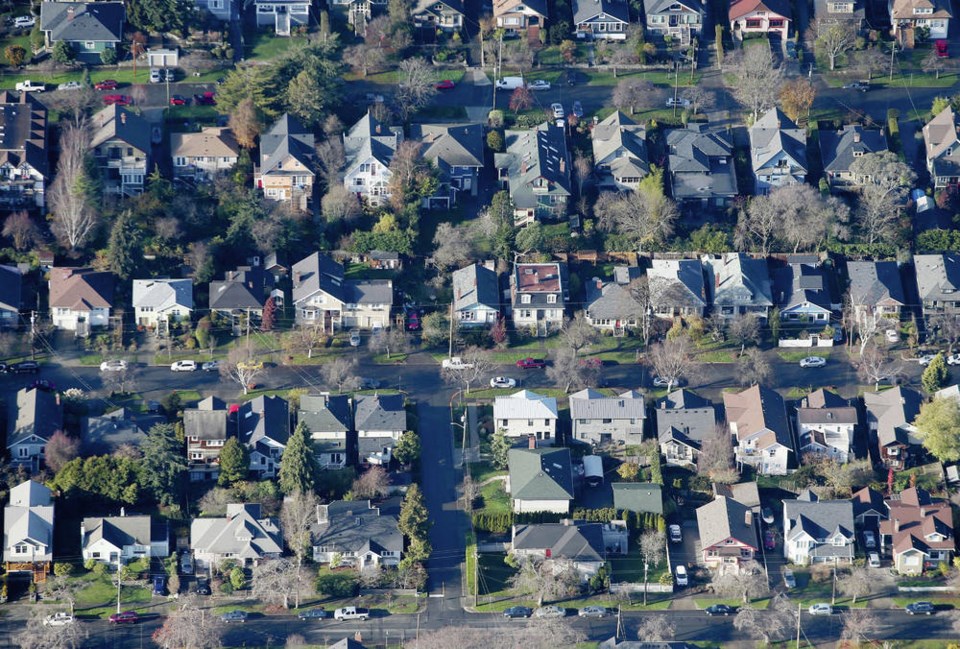Photo: Adrian Lam, Times Colonist
The “build it and they will come” approach is in line with conventional economic thinking: that more tax income will fund affordable housing and the homeless crisis. It’s overlooked that the current approach to development results in related infrastructure and services consuming the increased property tax revenue. And it encourages the financialization of housing – as an investment rather than a home – which continues in spite of BC’s speculation tax.
A balanced approach is called for. We should be encouraging homeowners to offer modest rent to hard-pressed post secondary students, (Home Share/Home Care accompanied by helpful match-making and oversight services). Tiny affordable backyard houses can provide an alternative to wasteful demolition of well-built character bungalows – and replacing them with large single family houses lot line to lot line – (as is occuring in Oak Bay which is losing population). Suitable sites in the CRD should be sought for the marginalized and homeless, (for example, Eugene, Oregon provides small, “Conestaga huts” – cohesive groupings of simple modular housing with nearby resources and services).
With suitable housing, healing, jobs and community security are more likely to follow.
Friends who used to feel fairly well housed are now moving from one demo house to another, or sleeping in vehicles – evidence of growing social and income inequality. Implementation of the propsed federal Guaranteed Annual Income would help tremendously.
Let’s actively address climate change, social justice and Reconciliation!
Concern about Covenants applies to my striving for a perpetual Covenant harmonizing Indigenous law with Canadian law applied to my home on Chikawich Sacred Land, at 151 Sunny Lane, bequeathed to the Victoria Native Friendship Centre. The VNFC and I want a Covenant to protect the land being rewilded (without killing introduced plants), and continuation of efforts on an Edibles Demonstration Garden, with Indigenous Food Security in mind. I’m told that urban covenants – even when clearly beneficial to neighbourhoods – are easily overturned, yet ways of upholding them ought to be entrenched in law.
Here is my letter to Victoria City Council and Mayor:
Honourable Mayor Helps and Council, I greet you as a guest on Lekwungen territory, cared for over millennia. It is my hope that you will deeply appreciate the beautiful greenspace at 902 Foul Bay Road by acknowledging its status as a natural area. Awareness of the value of covenanted trees and their role in mitigating climate change is importa
When farsighted landowners choose to covenant their holdings rather than succumb to real estate profits, Councils can rejoice in the community benefit.
People from across Canada and around the world yearn to settle in our capital city area. We can be mindful of the need to address truly affordable housing and homelessness, rather than encouraging inappropriate densification.
As I understand it, most Redfern neighbours are hoping for a decrease in the number of units and shifting of footprints to accommodate valued protected trees. D’Ambrosio architecture and urbanism can live up to its exalted reputation for adapting creatively to 21st century needs and requirements.
Developers, including Aryse, tend to plead that expenses dictate densification. If that is the case, I request that Victoria consider appropriate property tax forgiveness, conditional on Aryse providing relevant financial records. Victoria is renowned for safeguarding heritage properties through property tax incentives.
I’d like to emphasize the importance of acknowledging Covenants. Protecting valuable greenspace and built heritage offers lasting community benefits without councils purchasing these special assets. Challenges in the form of over- development proposals can be collaboratively addressed.
